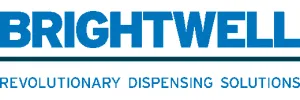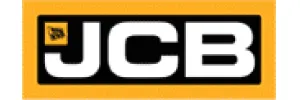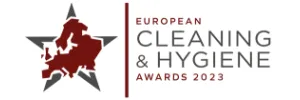News & Insights
Read the latest news from us and our clients across the globe

Posted on 6 April 2016 by adtrak.admin
Taking the step up to clean at height
If you think about cleaning at height, you probably think of ladders, elevated platforms or abseiling. Each of these has an important role to play, but you could be overlooking the fundamental aspect of working at height, according to Sean Canty, Director at CAM Specialist Support.
 The most important thing to think about is the people involved. Who will be carrying out the work and will they be safe. It may seem over the top, or ‘health and safety gone mad’, but the fact is that any task that involves looking above head height or taking a step off the ground constitutes working at height and shouldn’t be undertaken without the correct training and equipment.
The most important thing to think about is the people involved. Who will be carrying out the work and will they be safe. It may seem over the top, or ‘health and safety gone mad’, but the fact is that any task that involves looking above head height or taking a step off the ground constitutes working at height and shouldn’t be undertaken without the correct training and equipment.
Unnecessary danger
We’ve heard of incidents where cleaning operatives have been forced to use step ladders and then climb onto a ledge, all while carrying their equipment, in order to clean light fittings. This may not be considered a great height, but it shows how easy it is for operatives to be put in all sorts of unnecessary danger, by leaving the ground.
According to the Health & Safety Executive (HSE): “Slips, trips and falls are the most common cause of major injury to employees leading to 2 million lost working days in 2012/13 and representing a major financial burden to businesses”. We would argue that it is about more than money. There is also a moral burden for business to take care of their employees by not placing them in unnecessary danger. The likelihood of being involved in a slip, trip or fall accident is greatly increased as soon as you take a step off the floor or risk overbalancing by looking up or leaning back.
Increasing safety
Whereas some years ago cutting corners occurred all too often for those working at height, now thanks to the new legislation – Work at Height Regulations 2005 (and the 2007 Amendment) – there is much greater awareness of the health and safety risks and ignoring the legislation is very much the exception to the rule. However, to ensure safety for all, we need to be aware of the risks.
Bringing colour to assessments
Whenever you are considering a work at height task, a well-planned, tailored risk assessment (RA) – or in layman’s terms ‘a thorough analysis of what could cause injury and how to avoid it’ – should be conducted to ensure that working at height tasks are carried out in the safest way possible. In fact, under the Work at Height regulations 2005, a tailored RA is a legal requirement.
At CAM Specialist Support we have devised a visual style of risk assessment across the 800 plus properties we work on. Using bright graphics, colours and pictures and a multi-lingual system that reflects an increasingly multi-cultural workforce makes the assessment much more assessable to everyone. This way it is possible to communicate essential safety information in a way that can be easily absorbed by anyone involved in a project.
Getting higher
Buildings and work environments change, and so too will the associated challenges and potential risks. The severity of hazards does increase the higher up you go. That’s why assessing the risks and selecting the right approach for the job is crucial.
A popular way to keep operatives’ feet on the ground is to use water-fed pole systems which can work up to 20 metres in height (or about six floors). This means that windows, UPVC, facades, glass roofs, panelling and cladding can all be cleaned more easily, effectively and safely without any operatives having to leave the ground. Using poles instead of ladders reduces the chance of an accident occurring, and also increases privacy and reduces disturbance for building occupants.
Statistically many people have accidents while using ladders; however, this is usually due to poor training and maintenance rather than any inherent danger. Any idea that working with ladders has been banned is a myth and they are still a useful tool in the right situation.
On the up
Water fed poles can be used on the majority of buildings, but for the rest, including those over 20 metres tall, it isn’t appropriate to use a pole system (or ladder). For these buildings, highly trained operatives should use technically-advanced suspended-access equipment, such as cradles, mobile elevated work platforms (MEWPs), temporary scaffolds and rope access to enable cleaning and maintenance to be carried out safely. Specialist operatives are fully trained in the use of access equipment for cleaning high-level areas.
Don’t be left hanging
Often the only way to gain access to high locations and awkward spaces to carry out cleaning without causing damage or disruption is to use rope access services. This is something CAM Abseiling Ltd specialises in and the Industrial Rope Access Trade Association (IRATA) trained rope access team can access all types of structures and buildings, internally and externally.
Our abseiling team recently carried out cleaning work at the Grand Buildings, 1-3 The Strand, London, including the glass atrium roof where the only alternative would have been cumbersome and expensive scaffolding which would have caused major disruption for people working in the building.
Solid base
Outside a building, sometimes a more stable base is required for the task at hand. This is when MEWPs can be the best solution. They are not an ‘easy option’ nor do they reduce the need to properly assess the situation and use trained operatives. The HSE reports that “Operators have died when trapped in the MEWP basket or when the machine has overturned. Great care must be taken to select the most appropriate MEWP and ensure that use of the machine is properly planned and managed. Operator instruction and training are very important requirements.”
Everyone involved in operating the MEWP must be fully trained for the appropriate category of machine. CAM’s trained operatives recently successfully used 19 metre and 34 metre truck-mounted access-platforms to remove accumulated dirt, grime and pollution from all the stone, glass blocks, metal panels, metal fins and glazing at the County Square Shopping Centre, in Ashford, Kent. They also cleaned the glass canopy over a pedestrian entrance and fitted obscure film to the underside of the canopy.
During the cleaning work, which was carried out during the evening to minimise disruption, the trucks had to be parked on the public highway. This meant securing the correct local authority permits and also ensuring that no-one was endangered while the clean was carried out. As working at height specialists, health and safety precautions are always paramount, for our operatives as well as the public.
Don’t risk it
Even well-intentioned organisations can leave themselves vulnerable to the risk of accident, injury or prosecution if their risk assessment process is weak, poorly planned or outdated. Whatever your work at height project, it’s not worth taking risks. When determining the most appropriate method to be used you should always consult a specialist in working at height.
For more information about working at height or specialist training courses, please contact CAM Specialist Support by telephoning 020 3411 7211 or email info@camsupport.co.uk.
See www.camsupport.co.uk for further information.
Published in CHT – March 2016
Experts in Public Relations Services & Communications Management
Our ServicesGenuine industry specialists in cleaning and hygiene, environmental and recycling, and facilities management
Our Sectors












